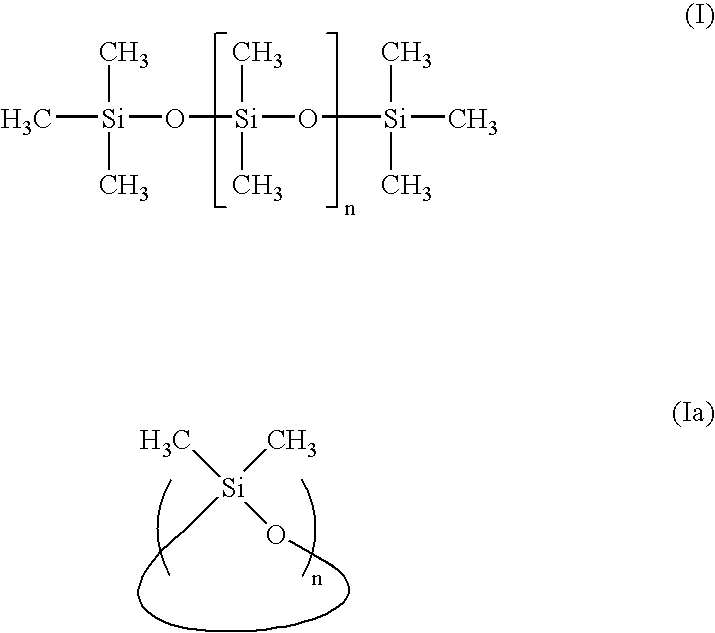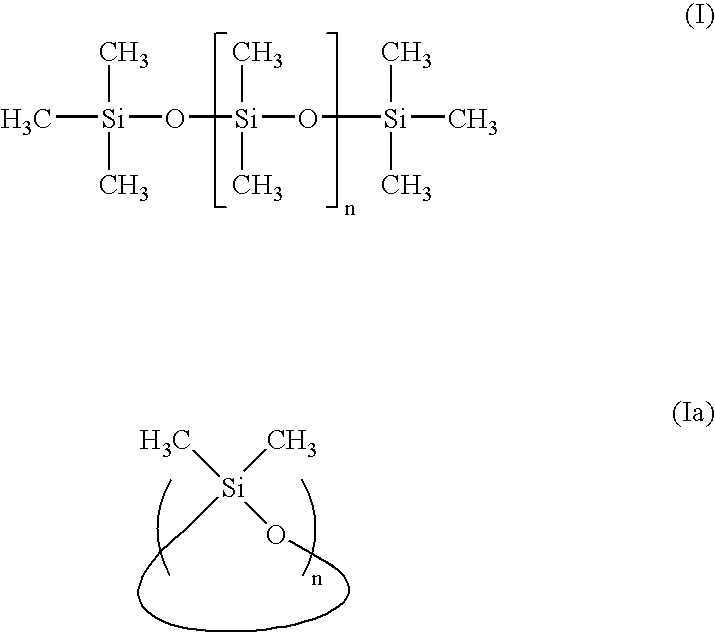Process for producing detachable dirt- and water-repellent surface coatings
a surface coating and dirt-repellent technology, applied in chemical vapor deposition coatings, group 4/14 element organic compounds, solid waste management, etc., can solve the problems of structure that renders the surface self-cleaning, damage or sometimes completely lost, and loss of self-cleaning effect,
- Summary
- Abstract
- Description
- Claims
- Application Information
AI Technical Summary
Benefits of technology
Problems solved by technology
Method used
Image
Examples
example 2
[0051] 0.5 g of siloxane wax (Tegopren® 6814, hereinafter TP 6814) with a molar mass of 13 000 g / mol and a recrystallization point of 2 / g, (Aerosil® R 812 S) was dispersed in this solution, with vigorous stirring.
[0052] On white glazed tiles, this suspension gave a contact angle of 130° and a gloss value of 15.0 at 85°.
example 3
[0053] 0.5 g of siloxane wax (Tegopren® 6814) with a molar mass of 13 000 g / mol and a recrystallization point of 2 / g, (Aerosil® R 8200, hereinafter R 8200) was dispersed in this solution, with vigorous stirring.
[0054] On white glazed tiles, this suspension gave a contact angle of 105° and a gloss value of 56.1 at 60°.
example 4
[0055] 0.5 g of siloxane wax (Tegopren® 6814) with a molar mass of 13 000 g / mol and a recrystallization point of 2 / g, (Aerosil® R 812 S) was dispersed in this solution, with vigorous sting.
[0056] On white glazed files, this suspension gave a contact angle of 133° and a gloss value of 11.7 at 85°.
PUM
| Property | Measurement | Unit |
|---|---|---|
| surface energy | aaaaa | aaaaa |
| height | aaaaa | aaaaa |
| elevation height | aaaaa | aaaaa |
Abstract
Description
Claims
Application Information
 Login to View More
Login to View More - R&D
- Intellectual Property
- Life Sciences
- Materials
- Tech Scout
- Unparalleled Data Quality
- Higher Quality Content
- 60% Fewer Hallucinations
Browse by: Latest US Patents, China's latest patents, Technical Efficacy Thesaurus, Application Domain, Technology Topic, Popular Technical Reports.
© 2025 PatSnap. All rights reserved.Legal|Privacy policy|Modern Slavery Act Transparency Statement|Sitemap|About US| Contact US: help@patsnap.com



